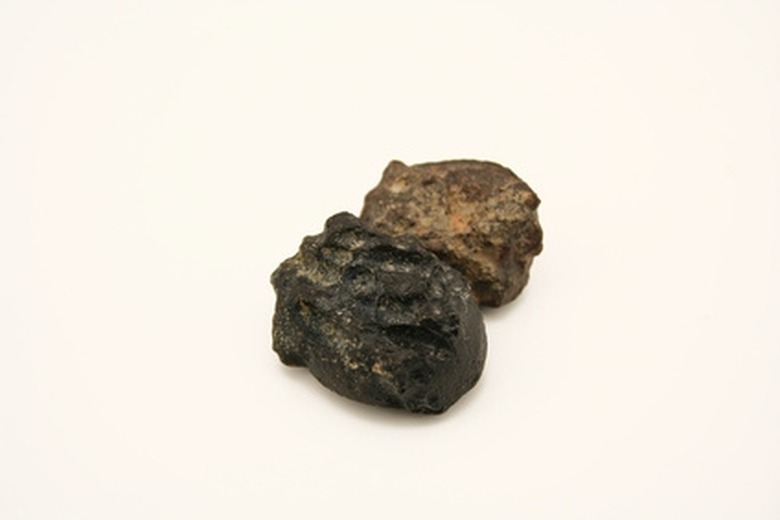Three Major Types Of Meteorites
Meteorites are to stones from other planets that survive the transition through the Earth's atmosphere. Most meteorites originate from collisions between two asteroids. Scientists study meteorites to determine what the solar system is like. For example, most scientific information about the estimated age, chemical composition and history of the solar system is derived from meteoric evidence. Scientists classify meteorites into three major groups.
Iron Meteorites
Iron Meteorites
Iron meteorites are composed mostly of iron and also contain small amounts of nickel and cobalt. Iron meteorites are very heavy and are collected more frequently than other types of meteorites. Iron meteorites cut in half exhibit a geometrical pattern known as a Widmanstatten pattern. Widmanstatten patterns occur because iron meteorites cooled under very high pressure over a long period of time. Three subgroups of iron meteorites, classified according to nickel content, are hexahedrites, octahedrites and ataxites.
Stony Meteorites
Stony Meteorites
Stony meteorites, sometimes referred to as stone meteorites, fall to Earth more frequently than other types, but are more difficult to distinguish. These meteorites range in color and can be fine or coarse grained. Stony meteorites contain a variety of substances, but all are chemically distinguished from rocks formed on Earth. Stony meteorites are further classified into two groups: chondrites and achondrites.
Stony-Iron Meteorites
Stony-Iron Meteorites
Stony-iron meteorites represent a rare type of meteorite that contains both stone and iron. Stony-iron meteorites contain two subgroups: mesosiderites and pallasites. Less than 2 percent of meteorites are stony-iron. These meteorites, however, can be among the most attractive. For example, green pallasite meteorites with pure olivine crystals are known as peridot, a gemstone.
Cite This Article
MLA
Richards, Rebekah. "Three Major Types Of Meteorites" sciencing.com, https://www.sciencing.com/three-major-types-meteorites-6225062/. 24 April 2017.
APA
Richards, Rebekah. (2017, April 24). Three Major Types Of Meteorites. sciencing.com. Retrieved from https://www.sciencing.com/three-major-types-meteorites-6225062/
Chicago
Richards, Rebekah. Three Major Types Of Meteorites last modified August 30, 2022. https://www.sciencing.com/three-major-types-meteorites-6225062/
